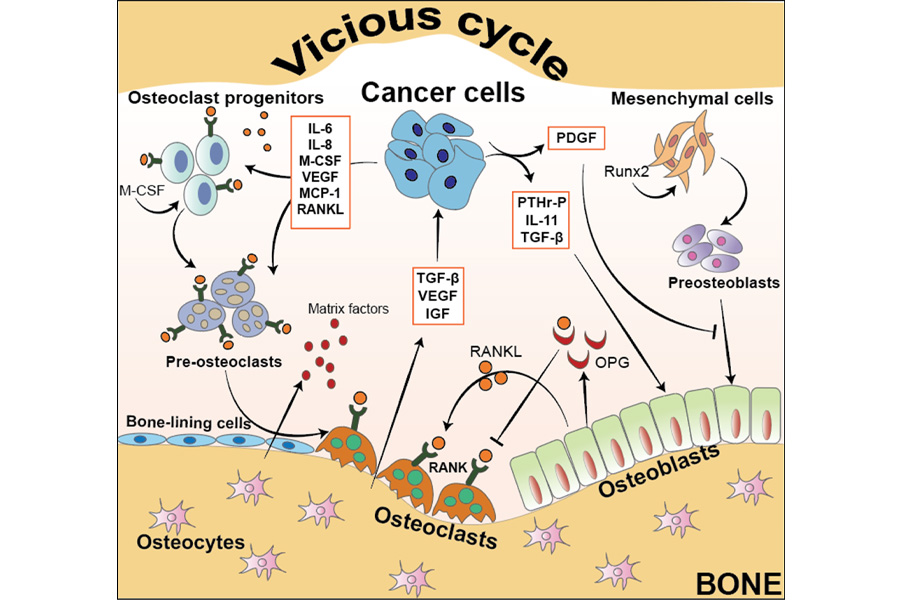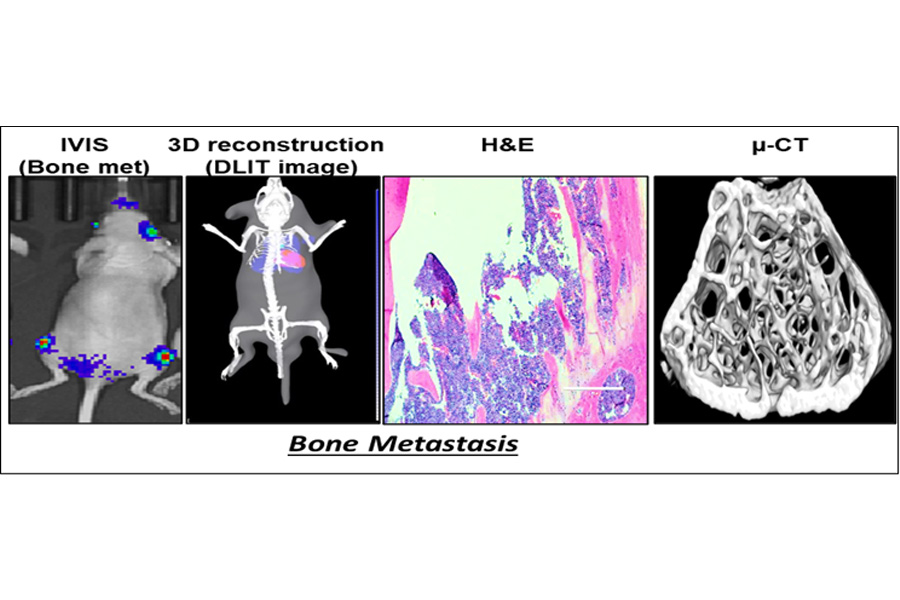Current Projects
One of the major objectives of our laboratory is to elucidate biological mechanisms underlying bone metastasis of different malignancies. Bone metastases or dissemination of cancer cells within the bone are considered an advanced, debilitating, and incurable disease. Despite its high morbidity and mortality, the biology of bone metastasis signifies one of the most multifaceted and fascinating processes in several malignancies. Prostate, breast, lung, and kidney cancers have characteristics of selective bone tropism.
The convolution of bone metastases derives from the intricately organized bone microenvironment where numerous vital processes, including hematopoiesis, osteogenesis, and osteolysis, are conjointly regulated with spatial limitations. Dissemination and homing of tumor cells in bone microenvironment are uniquely primed to destabilize the homeostasis of the bone microenvironment and fuel the pathological osteolytic and osteoblastic lesions. The bone metastasis process can be separated into three key steps (seeding, dormancy, and outgrowth), and targeting dormancy and outgrowth in bone microenvironments offers the most therapeutic promise.
Our lab has developed unique techniques and experimental models that allow us to decipher bone metastasis. Metastatic tumors attain the skill to blunt or overturn the functions of the immune system. We are interested in dissecting how metastatic cancers evolve to persuade the immune system dysfunctionality in primary and metastatic sites among tumors of diverse genetic backgrounds. Unraveling the mechanisms of the immune system and bone cell cross-talk offers therapeutic possibilities for bone metastasis. We study how cancer cells influence bone resident macrophages (Osteomacs) for their colonization and growth within the bone microenvironment and design therapeutic strategies accordingly.

Vicious Cycle of Bone Metastasis: The process of bone formation and resorption is well-regulated by RANK, RANKL, and OPG systems. During bone metastasis, cancer cells release several factors such as IL-6, IL-8, MCSF, VEGF, MCP-1/CCL2, PTH-rP, TGF-β, and RANKL in the bone microenvironment to modulate the activities of osteoclasts and osteoblasts. In turn, bone cells release pro-survival secreted factors to facilitate the growth of cancer cells within the bone microenvironment. Intercommunications between the altered bone modeling and cancer cells start a vicious cycle of bone metastasis.

Preclinical studies of Bone Metastasis: IVIS imaging after intracardiac injections of luciferase labeled cancer cells. 3D reconstruction (DLIT) image showing the in-vivo bone Mets. H&E staining shows the bone met after intracardiac injection and bone µCt analysis of the tibia.